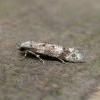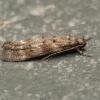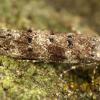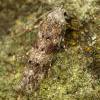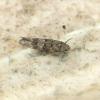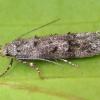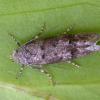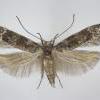35.159 Exoteleia dodecella (Linnaeus, 1758)
Status and Distribution
Widespread and local to locally common across much of the British Isles. Recorded from the Outer Hebrides for the first time in 2019 (South Uist, J. Kemp pers. comm.) but appently absent from the Northern Isles of Scotland, Isle of Man and the Channel Islands.
Provisional map
Foodplant and Larval Feeding Signs
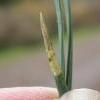
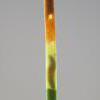
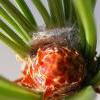
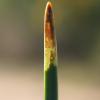
Pinus sylvestris (scots pine), see distribution map, and less commonly on Larix europeas (larch). Bred from Pinus contorta (lodgepole pine) in County Fermanagh in 1974.
Mines the needles and later feeds in shoots and on spun needles.
An experienced (deceased) micro-lepidopterist noted breeding the moth from a larva on Myrica gale (bog-myrtle) in 1972. No further comment is made in the diary entry and the information was not included in any subsequent publication so the circumstances of the finding and likelihood or otherwise of an error cannot be examined further.
Habitat
Heaths, mosses, moorland edge, woodland, parks and gardens, wherever the larval foodplant is found.
Finding the Moth
Larva: in the autumn, mines the apical half of the leaf (needle), the mine containing some spinning; ejects most of the frass through a hole at either end. After hibernation, bores into buds and shoots making white webs in amongst the needles.
Adult: observed flying amongst the lower branches of scots pine, has been beaten from the branches and comes to light.
Similar Species
The greyish fuscous forewings with broad rather ill-defined dark fuscous fascia at one-third and two-thirds and black tufts of erect scales are distinctive. Worn specimens could be confused with Teleiodes vulgella, Teleiodes wagae and perhaps Carpatolechia notatella. In such circumstances dissection is advised.
Single brooded from early June to mid-August.
Earliest: 5th May 1983 (VC36) - only five other May dates and all in the last two weeks. A record from VC49 on 18th April 1971 comes from a very experienced micro-moth recorder but surprisingly no additional comment was added other than 'at light'.
Latest: 2nd September 2006 (VC42)

